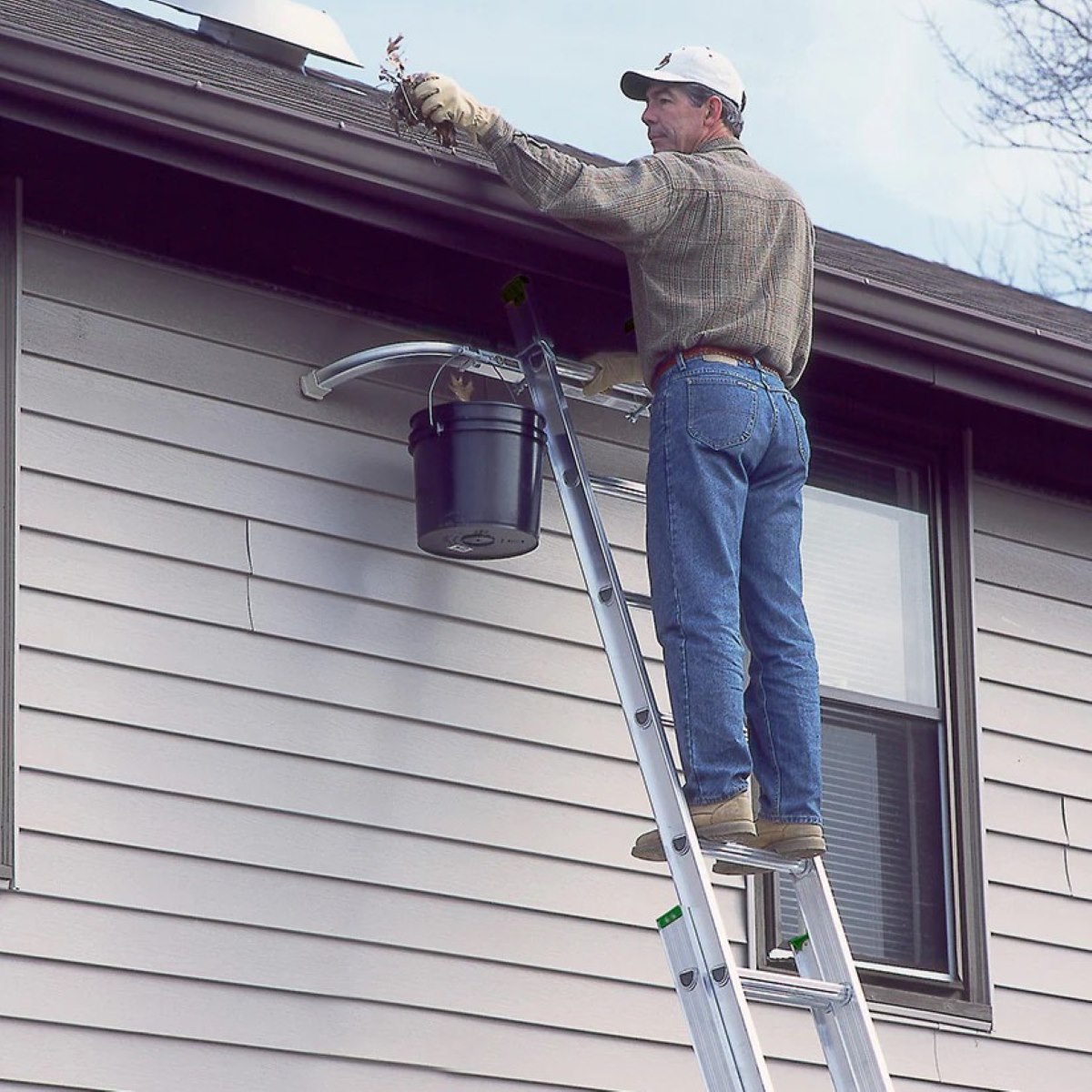

Articles
How To Use Ladder Stabilizer
Modified: January 6, 2024
Discover the best way to use ladder stabilizers. This articles provides essential tips and techniques for using ladder stabilizers safely and effectively.
(Many of the links in this article redirect to a specific reviewed product. Your purchase of these products through affiliate links helps to generate commission for Storables.com, at no extra cost. Learn more)
Introduction
Working with ladders can be a challenging task, especially when it comes to maintaining balance and stability while performing various tasks at heights. This is where a ladder stabilizer comes in handy. A ladder stabilizer is a valuable tool that can provide added support and stability, ensuring your safety and effectiveness while working.
Whether you are a professional tradesperson, a DIY enthusiast, or someone who occasionally needs to access high areas, understanding how to use a ladder stabilizer is essential. In this article, we will explore what a ladder stabilizer is, the benefits it offers, different types available, and provide step-by-step guidance on how to use one safely and effectively.
Key Takeaways:
- Using a ladder stabilizer enhances safety, stability, and productivity while working at heights. Understanding the different types, proper usage, and maintenance of a ladder stabilizer is crucial for a secure and efficient work experience.
- Prioritizing ladder safety and utilizing a ladder stabilizer significantly reduces the risk of accidents and injuries. Proper maintenance and storage of the stabilizer ensure its longevity and effectiveness, contributing to a successful and accident-free experience.
Read more: How To Stabilize A Ladder
What is a ladder stabilizer?
A ladder stabilizer is an attachment designed to be placed on the top or bottom of a ladder to enhance stability and prevent wobbling or tipping. It typically consists of two side extensions that extend outward from the ladder, creating a wider and more secure base of support.
The primary purpose of a ladder stabilizer is to distribute the weight and pressure exerted on the ladder more evenly, minimizing the risk of accidents or falls. It provides a solid foundation that reduces lateral movement and enhances the overall stability of the ladder.
Benefits of using a ladder stabilizer
Using a ladder stabilizer offers several key benefits for both safety and productivity:
- Enhanced Stability: The primary benefit of a ladder stabilizer is the improved stability it provides. It helps to eliminate wobbling, swaying, and tipping, allowing you to work with confidence at various heights without the fear of losing balance.
- Increased Safety: By minimizing the risk of ladder accidents or falls, a stabilizer significantly enhances safety. It keeps the ladder securely in place, reducing the chances of accidents caused by shifting or sliding.
- Better Weight Distribution: A ladder stabilizer spreads the weight of the ladder and the person using it more evenly. This helps to reduce the strain on the ladder itself and decreases the likelihood of structural damage or failure.
- Improved Versatility: With a stabilizer, you can work on uneven surfaces or on stairs with greater ease. It provides a level and secure platform to ensure stability, even in challenging working environments.
- Efficiency and Productivity: By providing a stable base, a ladder stabilizer allows you to focus on the task at hand, rather than on maintaining balance. This promotes better concentration, speed, and productivity in your work.
Overall, a ladder stabilizer is a crucial tool for anyone who regularly works at heights. It offers peace of mind, reduces the risk of accidents, and allows for more efficient and effective completion of tasks.
Key Takeaways:
- Using a ladder stabilizer enhances safety, stability, and productivity while working at heights. Understanding the different types, proper usage, and maintenance of a ladder stabilizer is crucial for a secure and efficient work experience.
- Prioritizing ladder safety and utilizing a ladder stabilizer significantly reduces the risk of accidents and injuries. Proper maintenance and storage of the stabilizer ensure its longevity and effectiveness, contributing to a successful and accident-free experience.
Read more: How To Stabilize A Ladder
What is a ladder stabilizer?
A ladder stabilizer is a device or attachment that is used to enhance the stability and safety of a ladder. Its primary function is to distribute the weight more evenly and create a wider base of support, reducing the risk of the ladder tipping over or sliding. It typically consists of two side extensions that can be attached to the top or bottom of the ladder.
When a ladder stabilizer is properly installed, it can significantly improve the stability of the ladder, making it safer to use, especially when working at greater heights. The increased stability provided by the stabilizer helps to eliminate wobbling and swaying, allowing the user to focus on the task at hand without worrying about maintaining balance.
Ladder stabilizers are commonly used in various industries and professions that require working on ladders, such as construction, painting, maintenance, and window cleaning. They are also valuable tools for homeowners who need to perform tasks like gutter cleaning, tree trimming, or changing light bulbs at heights.
The design of ladder stabilizers can vary, but the most common type consists of two extensions that are connected to the ladder using brackets or clamps. These extensions extend outwards from the sides of the ladder, creating a wider base and increasing the overall stability. Some stabilizers also have adjustable legs that can be used to compensate for uneven ground or surfaces.
Using a ladder stabilizer not only improves safety but also allows for better weight distribution. By spreading the weight over a wider area, the stabilizer reduces the stress on the ladder itself, minimizing the risk of structural damage or failure. This is particularly important when using the ladder for heavy-duty tasks or when carrying heavy tools or equipment.
Furthermore, ladder stabilizers offer increased versatility, enabling users to work on various surfaces and inclines. They provide a stable platform, even on stairs or uneven ground, allowing for safe and secure ladder placement.
Overall, a ladder stabilizer is an essential tool for anyone who regularly works with ladders. It offers improved stability, enhanced safety, and increased versatility, making it easier and more efficient to perform tasks at heights. Whether you are a professional tradesperson or a homeowner, investing in a ladder stabilizer can greatly enhance your ladder safety and overall work experience.
Benefits of using a ladder stabilizer
Using a ladder stabilizer offers numerous benefits, making it a valuable tool for anyone working at heights. Here are some of the key advantages of using a ladder stabilizer:
- Enhanced Stability: The primary benefit of a ladder stabilizer is the improved stability it provides. By extending the ladder’s base, it significantly reduces the risk of wobbling, swaying, or tipping. This ensures a solid and secure platform for working, enhancing your safety and confidence while on the ladder.
- Reduced Risk of Accidents: With a ladder stabilizer, the chance of ladder-related accidents and falls is significantly minimized. The increased stability prevents the ladder from shifting or sliding, reducing the likelihood of accidents caused by unstable footing. This is especially important when working on uneven or slippery surfaces.
- Better Weight Distribution: A ladder stabilizer helps distribute the weight across a wider area, reducing the strain on the ladder itself. This balanced weight distribution improves the ladder’s overall strength and stability, reducing the risk of structural damage or failure. It also allows for the safe use of heavy tools or equipment while on the ladder.
- Improved Versatility: Ladder stabilizers enhance the versatility of your ladder by providing stability on various surfaces. They can be used on stairs, inclines, or uneven ground, allowing you to work safely in challenging environments. This versatility expands the range of tasks you can perform with your ladder.
- Increased Efficiency: With a ladder stabilizer in place, you can concentrate more on the task at hand rather than on maintaining balance. The improved stability provided by the stabilizer allows for more precise and efficient work. This leads to increased productivity, saving you time and effort.
- Peace of Mind: One of the essential benefits of using a ladder stabilizer is the peace of mind it brings. Knowing that your ladder is stable and secure allows you to focus on your work without worrying about potential accidents or falls. This gives you the confidence to complete tasks at heights with greater ease.
- Compliance with Safety Standards: Using a ladder stabilizer demonstrates your commitment to safety and compliance with industry standards. It shows that you prioritize the well-being of yourself and others around you. Many workplace safety regulations and guidelines strongly recommend or require the use of ladder stabilizers in certain situations.
Overall, the benefits of using a ladder stabilizer are undeniable. It enhances stability, reduces the risk of accidents, ensures better weight distribution, improves versatility, increases efficiency, and provides peace of mind. Investing in a ladder stabilizer is a wise decision to enhance your ladder safety, productivity, and overall work experience.
Read more: How To Stabilize Pool Ladder
Types of ladder stabilizers
When it comes to ladder stabilizers, there are several types available, each designed to suit different ladders and specific tasks. Here are some common types of ladder stabilizers:
- Extension Stabilizers: Extension stabilizers are the most common type of ladder stabilizer. They consist of two extensions that attach to the top or bottom of the ladder using brackets or clamps. These extensions extend horizontally, creating a wider base and enhancing stability. Extension stabilizers are often adjustable, allowing for different ladder widths or angles.
- Standoff Stabilizers: Standoff stabilizers, also known as standoff arms, are designed to keep the ladder away from the wall or surface. They feature horizontal arms that extend outward, providing a gap between the ladder and the wall. Standoff stabilizers are ideal for tasks such as painting or cleaning windows, where you need to work close to a vertical surface without obstruction.
- Platform Stabilizers: Platform stabilizers are a type of ladder stabilizer that includes a sturdy platform at the top of the ladder. This platform provides a secure resting place for tools or equipment, allowing you to work with both hands-free. Platform stabilizers are commonly used in construction or maintenance tasks that require frequent use of tools and materials while on the ladder.
- Levelers: Levelers are specialized ladder stabilizers that are designed to compensate for uneven surfaces. They typically feature adjustable legs or feet that can be extended or retracted to ensure a level and stable base. Levelers are especially useful when working on stairs or on ground with slopes, eliminating the risk of the ladder tipping due to uneven footing.
- Wheel Stabilizers: Wheel stabilizers, also known as rolling stabilizers, are ladder attachments that include wheels or casters. These stabilizers allow for easy mobility of the ladder, making it convenient to move the ladder while maintaining stability. Wheel stabilizers are often used in tasks that require frequent ladder repositioning, such as painting or electrical work.
- Platform Stands: Platform stands are ladder stabilizers that include a sturdy platform at the bottom of the ladder. This platform provides a stable base for the ladder, enhancing overall stability and safety. Platform stands are commonly used for tasks that require a stable platform, such as heavy-duty construction or industrial applications.
It’s important to note that the availability of these types of ladder stabilizers may vary depending on the region, brand, and ladder size. When choosing a ladder stabilizer, consider the type of tasks you will be performing, the size and type of your ladder, and your specific needs for stability and mobility.
Remember to follow the manufacturer’s instructions for proper installation and ensure compatibility between the ladder stabilizer and your ladder model. By selecting the right ladder stabilizer for your needs, you can enhance safety, stability, and efficiency while working at heights.
When using a ladder stabilizer, make sure it is securely attached to the ladder and the surface it’s resting on. This will help prevent the ladder from slipping or tipping over while in use.
Step-by-step guide on how to use a ladder stabilizer
Using a ladder stabilizer correctly is essential to ensure maximum stability and safety while working at heights. Here is a step-by-step guide on how to use a ladder stabilizer:
- Select the appropriate ladder stabilizer: Choose a ladder stabilizer that is compatible with your ladder model and suits the tasks you will be performing. Consider factors such as the type of stabilizer, adjustability, and weight capacity.
- Inspect the ladder and stabilizer: Before attaching the stabilizer, thoroughly inspect both the ladder and the stabilizer for any damage or defects. Ensure that all components are in good working condition and that there are no loose or missing parts.
- Set up the ladder on a stable surface: Place your ladder on a flat, stable, and non-slip surface. Ensure that the ladder is fully extended and that all hinges, locks, and rungs are secure. If needed, use ladder levelers or shims to adjust for uneven ground.
- Attach the ladder stabilizer: Depending on the type of ladder stabilizer you have, follow the manufacturer’s instructions to securely attach it to the ladder. Use the provided brackets, clamps, or straps to ensure a tight and stable connection with the ladder.
- Check the stability: Once the stabilizer is attached, double-check that it is properly secured and stable. Gently shake the ladder to test for any wobbling or movement. If there is any instability, adjust the stabilizer or ladder until it feels secure.
- Position the ladder: Carefully position the ladder at the desired working location, ensuring that it is perpendicular to the ground or surface. Take note of any obstacles or hazards in the surrounding area and make necessary adjustments before climbing the ladder.
- Climb the ladder safely: Use the ladder’s rungs or steps to climb up slowly and steadily while maintaining a firm grip. Avoid overreaching or leaning too far to one side while on the ladder. Keep your body centered and maintain three points of contact at all times.
- Work within the ladder stabilizer’s range: When using a ladder stabilizer, make sure to stay within its width range to maintain its stability. Do not attempt to extend beyond the stabilizer’s reach as it may compromise the ladder’s balance.
- Secure tools and equipment: If your ladder stabilizer includes a platform or tool holder, utilize it to safely secure your tools and equipment. Make sure that they are within easy reach and properly secured to prevent any hazards from falling objects.
- Descend the ladder carefully: When descending the ladder, do so slowly and mindfully. Face the ladder and carefully step down one rung at a time, maintaining a secure grip. Take extra caution when reaching the bottom of the ladder to ensure a safe landing.
- Remove the ladder stabilizer: After completing your task, detach the ladder stabilizer from the ladder following the manufacturer’s instructions. Ensure that all parts are disconnected properly and safely store the stabilizer for future use.
Remember, ladder safety should always be the top priority. Follow these steps and adhere to safety guidelines and regulations when using a ladder stabilizer to mitigate the risk of accidents and ensure a secure and productive working experience.
Safety precautions when using a ladder stabilizer
While ladder stabilizers significantly enhance safety and stability, it is important to follow proper safety precautions when using them to prevent accidents and ensure a secure work environment. Here are some essential safety precautions to keep in mind:
- Choose a stable surface: Before setting up your ladder with a stabilizer, make sure to place it on a stable and level surface. Avoid uneven or slippery ground that may compromise the stability of the ladder.
- Inspect ladder and stabilizer: Thoroughly inspect both the ladder and the ladder stabilizer before use. Check for any damage, wear and tear, or missing parts. Ensure that all components are in good working condition.
- Follow weight capacity guidelines: Adhere to the weight capacity guidelines provided by the ladder manufacturer and the ladder stabilizer. Overloading the ladder or the stabilizer can lead to instability and possible accidents.
- Securely attach the stabilizer: Always ensure that the ladder stabilizer is properly attached and securely fastened to the ladder. Follow the manufacturer’s instructions for installation to guarantee a tight and stable connection.
- Maintain ladder stability: Regularly check for ladder stability throughout your work. If you notice any wobbling or movement, readjust the ladder stabilizer or ladder placement to regain stability before continuing.
- Use three-point contact: Maintain a firm grip on the ladder with both hands and have at least one foot on a rung while working on the ladder. This ensures a stable stance and reduces the risk of losing balance or falling.
- Secure tools and equipment: If using a ladder stabilizer with a platform or tool holder, ensure that all tools and equipment are securely attached and within easy reach. Securely tie down or tether any larger or heavier tools to prevent them from falling.
- Avoid overreaching: Do not overextend your reach while on the ladder. Instead, reposition the ladder to allow easy access to the work area. Overreaching can cause the ladder to become unbalanced and increase the risk of falling.
- Be aware of surroundings: Observe and be aware of your surroundings while working on a ladder with a stabilizer. Take note of any nearby hazards, overhead power lines, or obstacles that may pose a risk.
- Work within the stabilizer’s range: Stay within the width range of the ladder stabilizer to maintain stability. Avoid leaning too far to either side, as this can compromise the balance and increase the risk of tipping.
- Follow safety guidelines: Familiarize yourself with ladder safety guidelines and applicable industry regulations. Stay updated on best practices and recommendations for working at heights and using ladder stabilizers.
Remember, safety should always be the top priority when working with ladders and ladder stabilizers. By following these safety precautions and using the ladder stabilizer correctly, you can minimize the risk of accidents and create a safer working environment.
Common mistakes to avoid when using a ladder stabilizer
Using a ladder stabilizer can significantly improve safety and stability while working at heights. However, there are some common mistakes that people often make when using a ladder stabilizer. Avoiding these mistakes is crucial to ensure a secure and accident-free work environment. Here are some common mistakes to avoid:
- Incorrect attachment: One of the most frequent mistakes is not properly attaching the ladder stabilizer to the ladder. Ensure that you follow the manufacturer’s instructions and securely fasten the stabilizer using the provided brackets, clamps, or straps.
- Using an incompatible stabilizer: Using a ladder stabilizer that is not compatible with your ladder model can lead to instability and compromised safety. Always choose a stabilizer that is designed for your specific ladder type.
- Overreaching: Overreaching is a common mistake that can lead to loss of balance or the ladder tipping over. Always maintain three points of contact with the ladder and reposition it if necessary to avoid the temptation of overreaching.
- Using a damaged stabilizer: Using a ladder stabilizer that is damaged or worn can compromise its stability. Before each use, thoroughly inspect the stabilizer for any signs of damage such as cracks, bends, or missing parts. If any issues are found, replace or repair the stabilizer accordingly.
- Misjudging weight capacity: Exceeding the weight capacity of the ladder or the stabilizer is a common mistake that can lead to instability and accidents. Always ensure that you are aware of the weight limits and do not exceed them.
- Ignoring ladder maintenance: Neglecting regular ladder maintenance can lead to weakened ladder components, compromising the overall stability even with a stabilizer. Ensure that your ladder is in good working condition, with hinges, locks, and rungs in proper working order.
- Not securing tools and equipment: Failing to properly secure tools and equipment while using a ladder stabilizer can result in them falling and causing injuries to yourself or others. Always use lanyards, tool belts, or tethering systems to secure your tools.
- Working in inclement weather: Using a ladder stabilizer in adverse weather conditions such as rain, strong winds, or snow can be extremely risky. Avoid working with a ladder stabilizer when weather conditions are unfavorable as they can compromise stability and increase the chances of accidents.
- Improper ladder placement: Placing the ladder on uneven ground or an unstable surface is a mistake that can undermine the effectiveness of the stabilizer. Always ensure that your ladder is set up on a level and stable surface.
- Not following safety guidelines: Ignoring safety guidelines and regulations when working with a ladder stabilizer can put you at risk. Familiarize yourself with safety procedures and guidelines, and follow them diligently to prevent accidents and injuries.
By avoiding these common mistakes and using a ladder stabilizer correctly, you can ensure a safer and more secure working environment while working at heights. Prioritize your safety and take the necessary precautions to mitigate potential risks and accidents.
Read also: 12 Best Ladder Stabilizer for 2024
Maintaining and storing your ladder stabilizer
Maintaining and properly storing your ladder stabilizer is essential to ensure its longevity and effectiveness. By following these guidelines, you can keep your ladder stabilizer in optimal condition and ready for safe use whenever needed.
- Regular cleaning: Clean your ladder stabilizer regularly to remove dirt, dust, and debris that can affect its functionality. Use a soft brush or cloth to wipe down the stabilizer, focusing on any moving parts or connections.
- Inspect for damage: Before and after each use, carefully inspect the ladder stabilizer for any signs of damage, such as cracks, bends, or missing parts. If you notice any issues, promptly address them by repairing or replacing the damaged components.
- Lubrication: Some ladder stabilizers may have moving or adjustable parts that require lubrication for smooth operation. Consult the manufacturer’s guidelines to determine if lubrication is necessary and use the recommended lubricant sparingly.
- Store in a dry and protected area: When not in use, store your ladder stabilizer in a dry and protected area, away from moisture or extreme temperatures. This will help prevent corrosion or damage to the stabilizer components.
- Avoid excessive weight or pressure: Avoid placing heavy objects or stacking items on top of your ladder stabilizer during storage. Excessive weight or pressure can cause deformation or compromise the stabilizer’s structural integrity.
- Properly secure the stabilizer: If your ladder stabilizer is detachable, make sure to secure it properly when not in use. This can be done by fastening or tying down any loose parts to prevent them from moving or falling.
- Keep away from direct sunlight: Prolonged exposure to direct sunlight can cause damage to certain materials used in ladder stabilizers, such as plastic or rubber components. Store your ladder stabilizer in a shaded area or cover it with a protective cover when not in use.
- Follow manufacturer’s guidelines: Always refer to the manufacturer’s instructions and guidelines for specific maintenance and storage recommendations that are specific to your ladder stabilizer model. Manufacturers often provide specialized care instructions to ensure the longevity and performance of their product.
- Periodic inspection: Even when not in use, periodically inspect your stored ladder stabilizer to ensure it remains in good condition. Check for any signs of damage or deterioration and address any issues as soon as possible.
Properly maintaining and storing your ladder stabilizer will not only extend its lifespan but also contribute to its overall effectiveness and your safety while working at heights. By incorporating these practices into your routine, you can ensure that your ladder stabilizer is always in optimal condition and ready for use when you need it.
Conclusion
Using a ladder stabilizer can greatly enhance safety, stability, and productivity while working at heights. Whether you are a professional tradesperson, a DIY enthusiast, or a homeowner, understanding how to properly use and maintain a ladder stabilizer is essential for a secure and efficient work experience.
In this article, we have explored the concept of a ladder stabilizer and its benefits. We discussed the different types of ladder stabilizers available, such as extension stabilizers, standoff stabilizers, and platform stabilizers. Each type offers unique features suited for various tasks and environments.
We also provided a step-by-step guide on how to use a ladder stabilizer correctly, emphasizing the importance of ladder stability, weight distribution, and secure tool placement. Following the proper procedures and precautions while using a ladder stabilizer can greatly reduce the risk of accidents and injuries.
Furthermore, we highlighted the importance of safety precautions when working with a ladder stabilizer. Proper ladder placement, using the correct weight capacity, and regular inspections are all crucial to maintaining a safe working environment. We also discussed common mistakes to avoid to ensure optimal stability and prevent accidents.
Lastly, we emphasized the significance of maintaining and storing your ladder stabilizer. Regular cleaning, inspections for damage, and proper storage in a dry and protected area will help prolong the lifespan of your stabilizer and maintain its effectiveness over time.
In conclusion, a ladder stabilizer is an invaluable tool for anyone working with ladders and performing tasks at heights. By understanding how to use it correctly, following safety precautions, and maintaining it properly, you can significantly enhance safety, stability, and efficiency in your work. Prioritizing ladder safety and utilizing a ladder stabilizer will allow you to work with confidence and peace of mind, ensuring a successful and accident-free experience.
Frequently Asked Questions about How To Use Ladder Stabilizer
Was this page helpful?
At Storables.com, we guarantee accurate and reliable information. Our content, validated by Expert Board Contributors, is crafted following stringent Editorial Policies. We're committed to providing you with well-researched, expert-backed insights for all your informational needs.
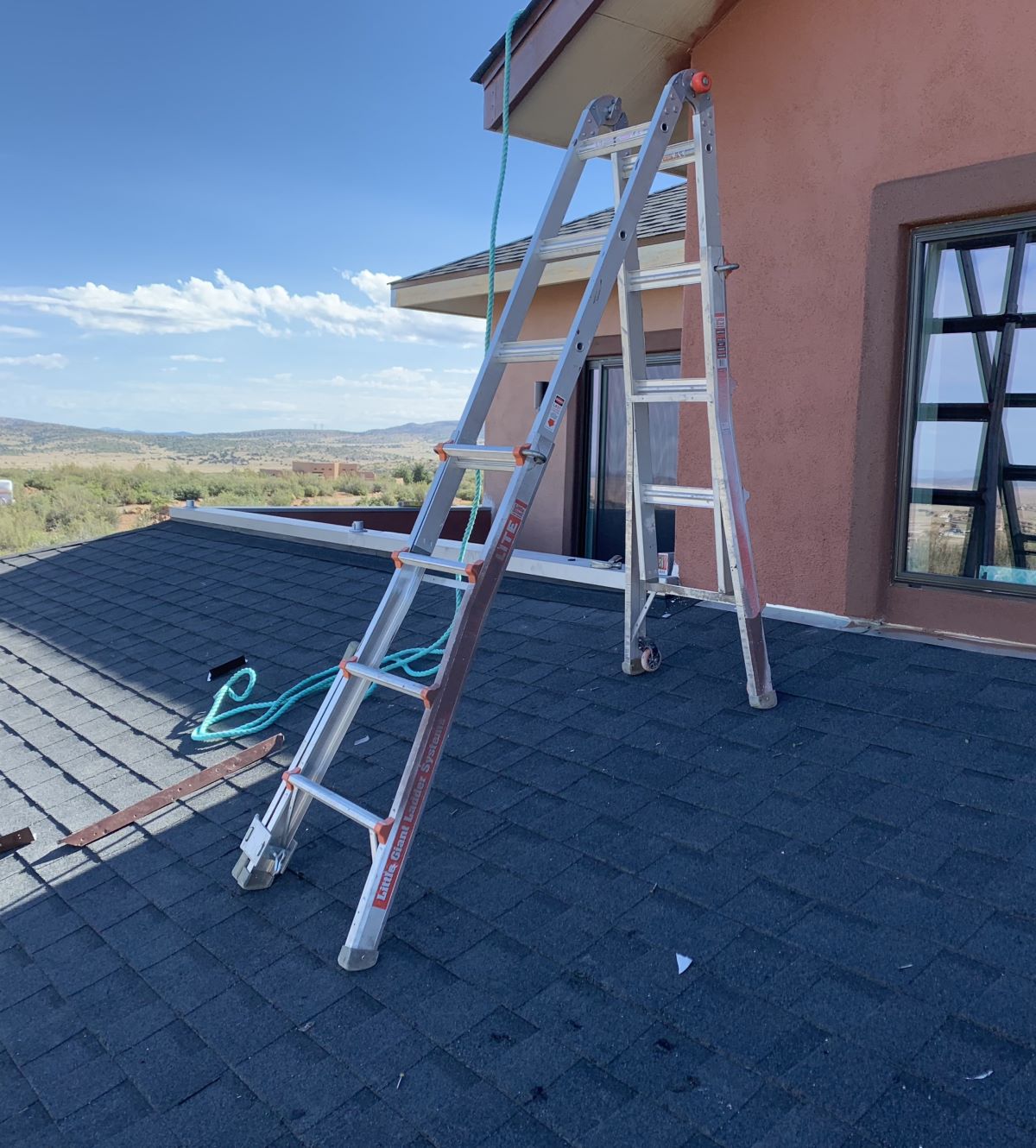
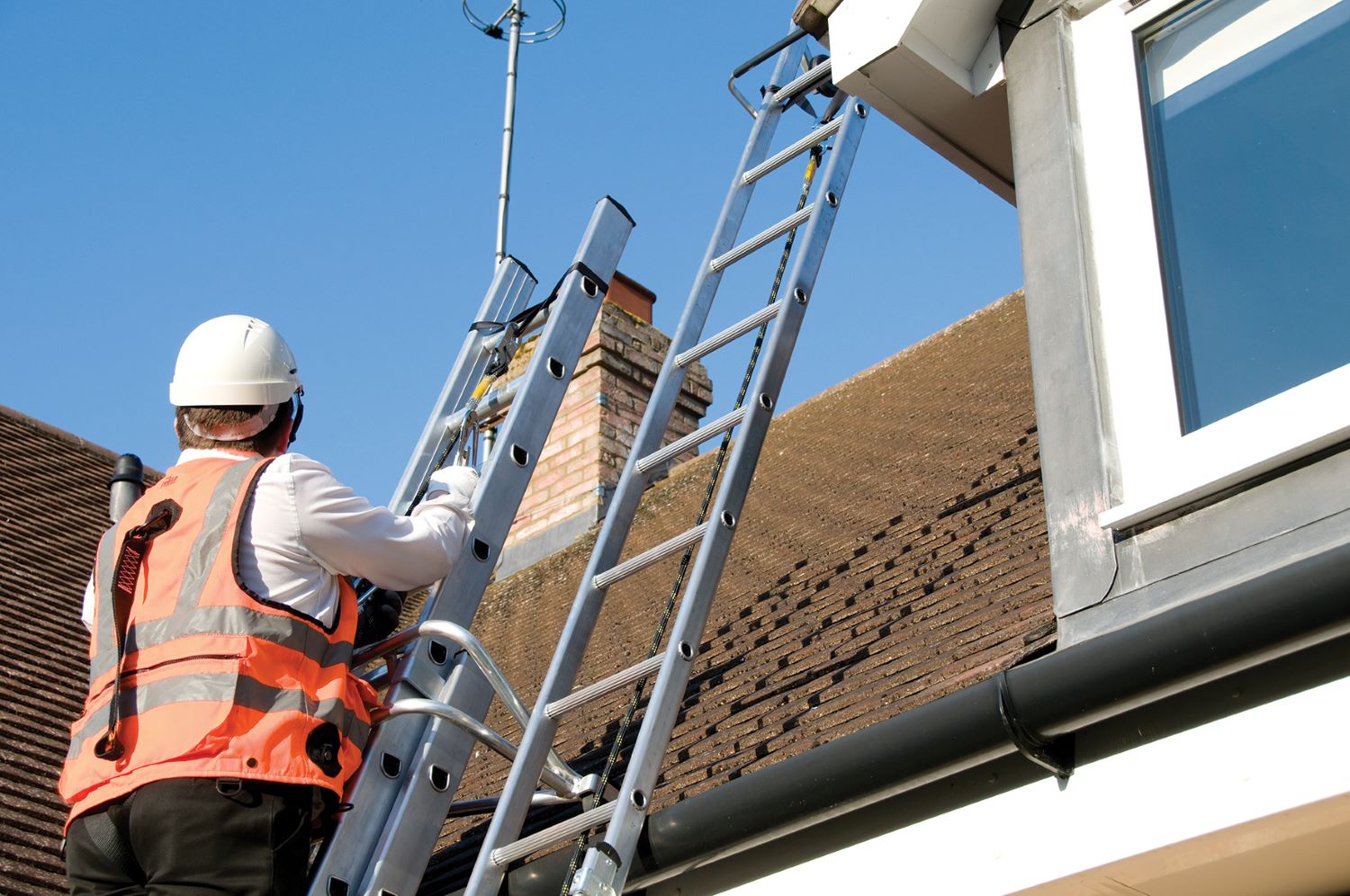

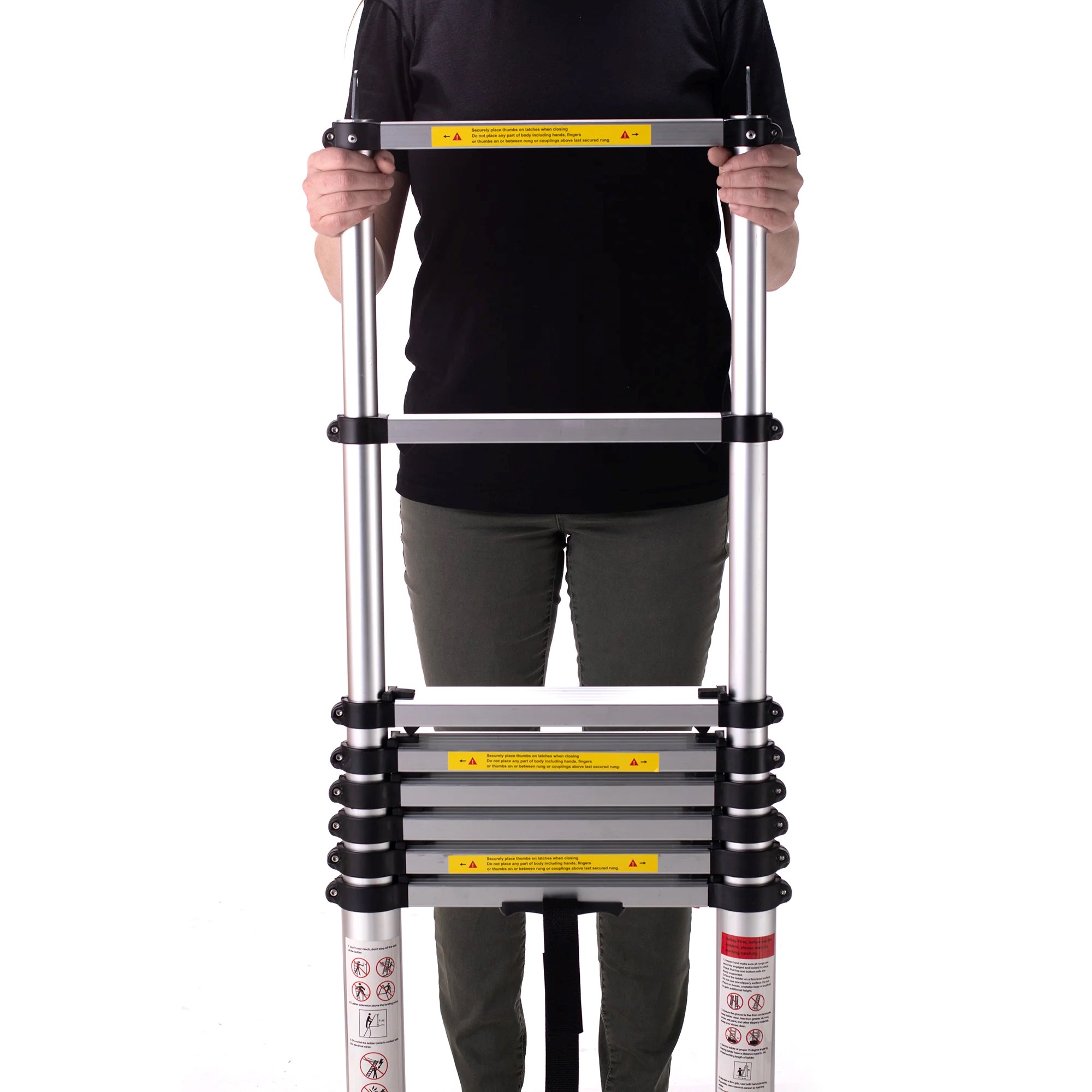
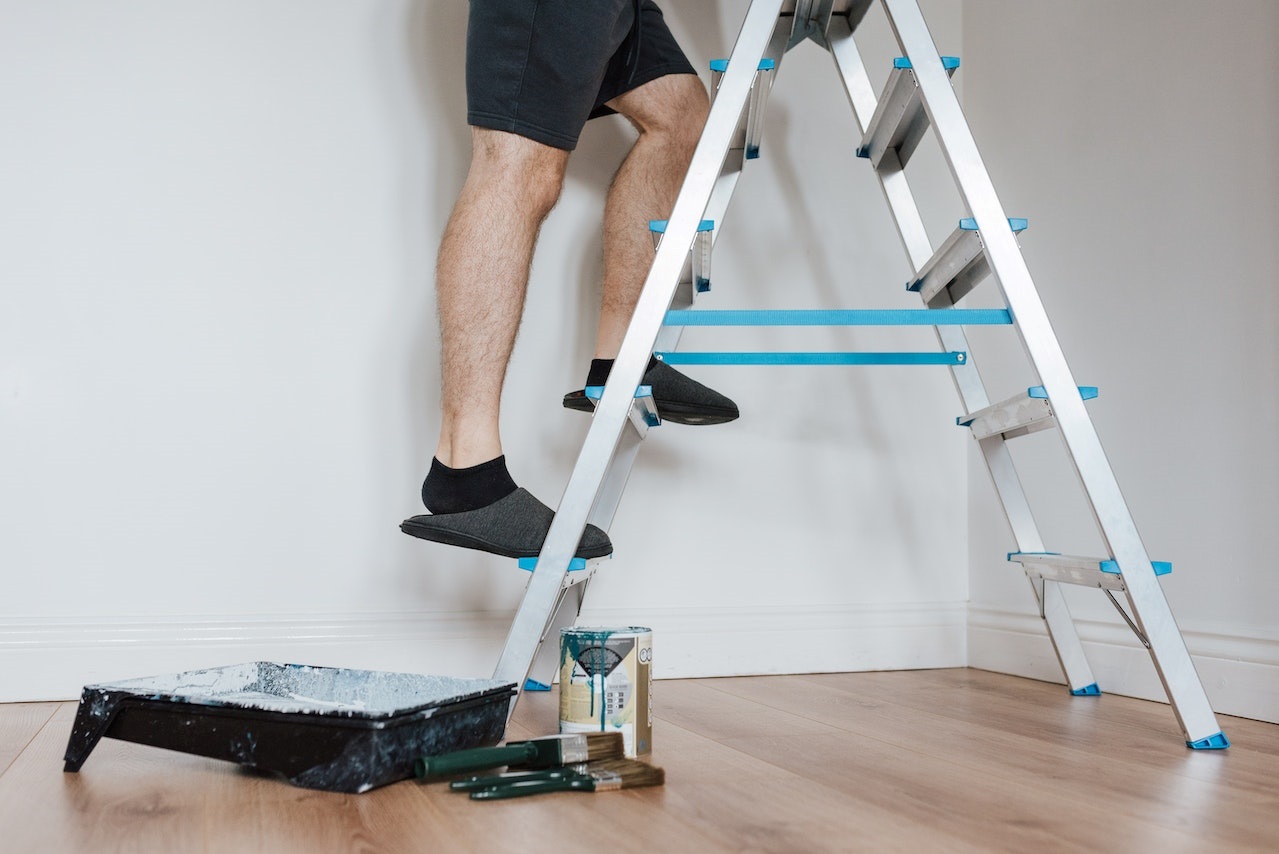
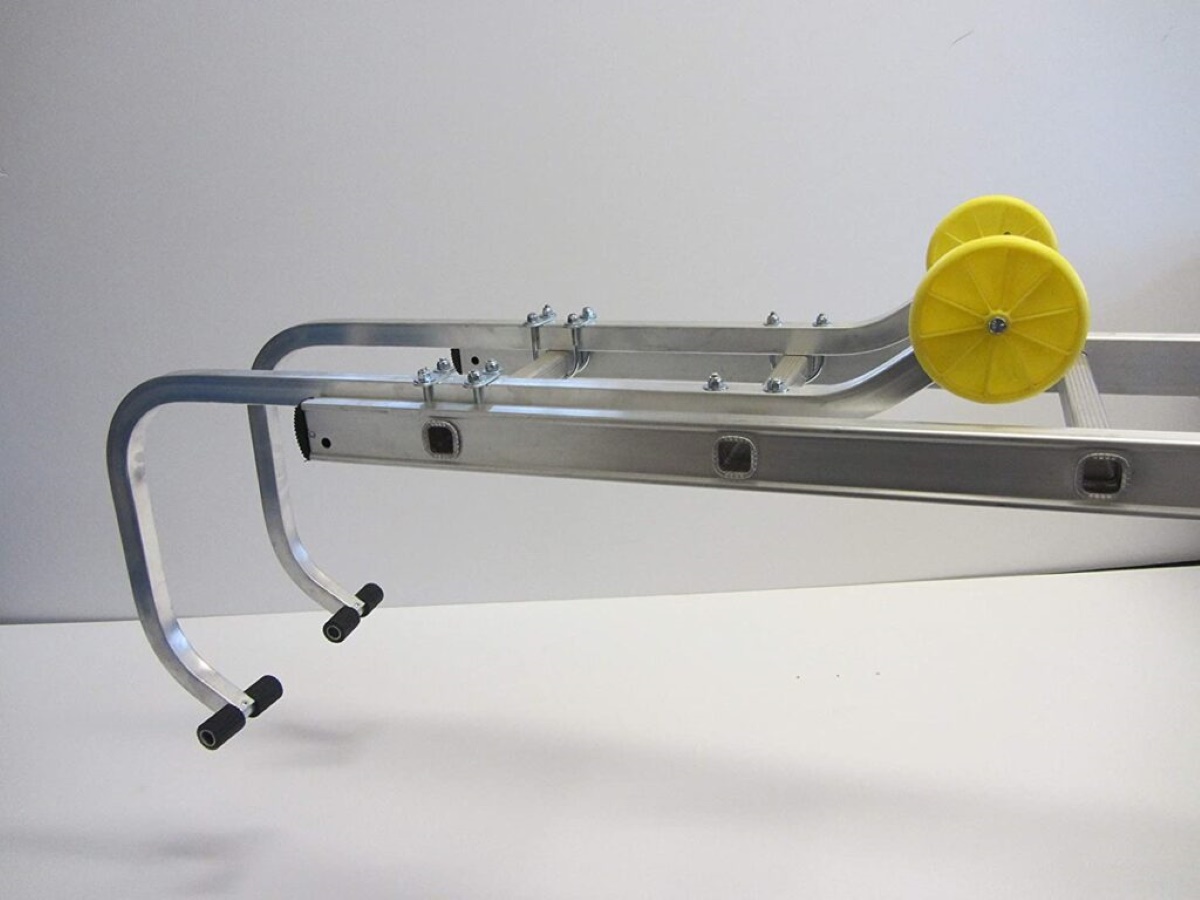
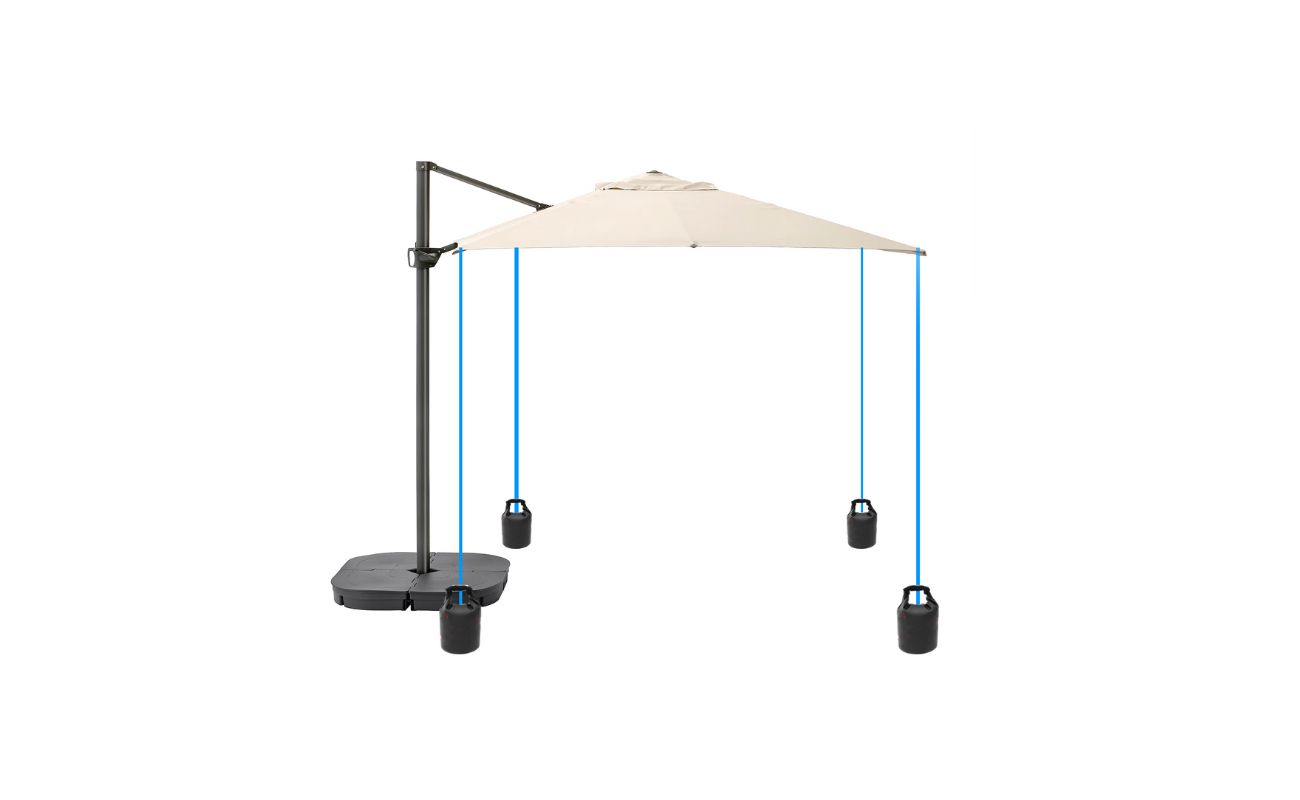

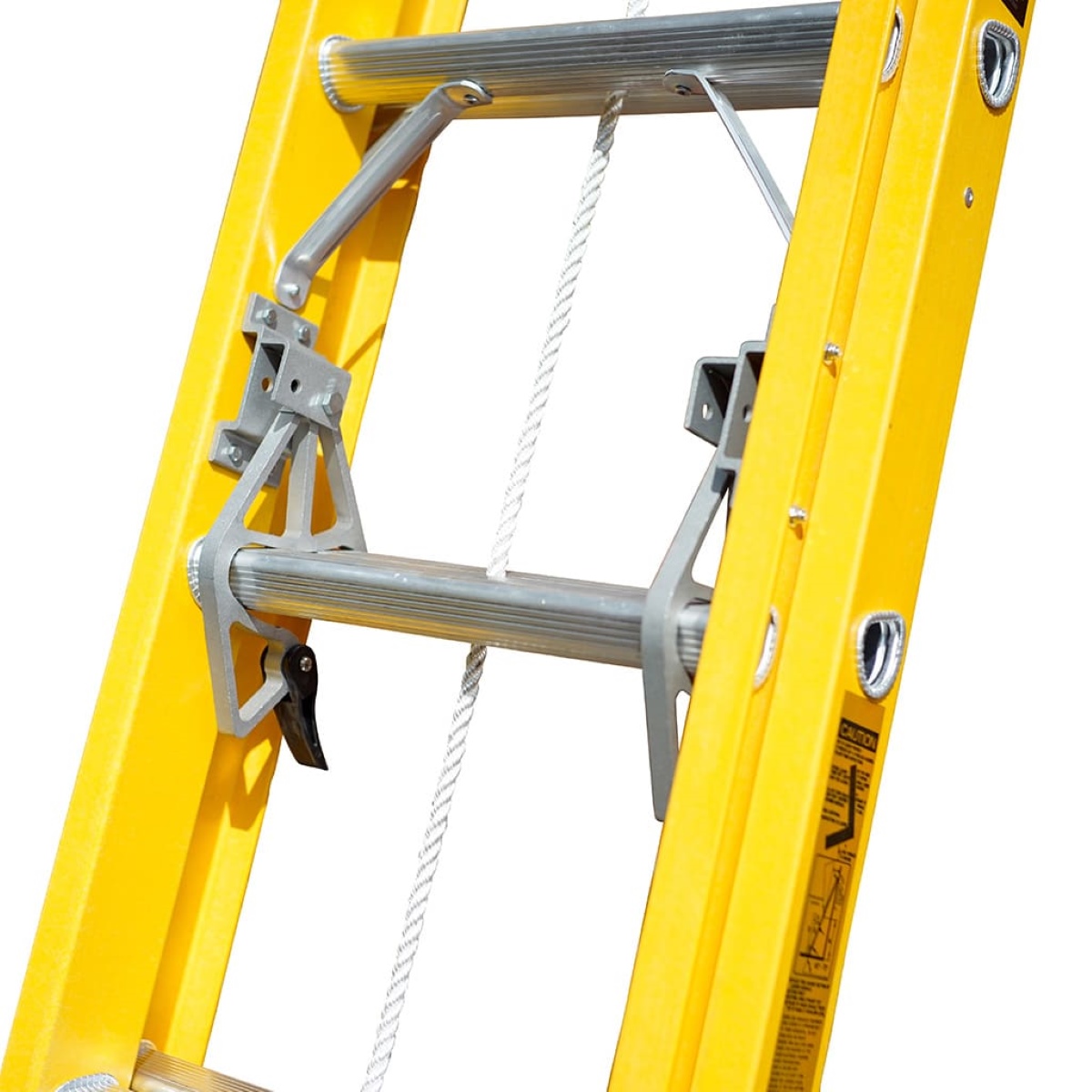

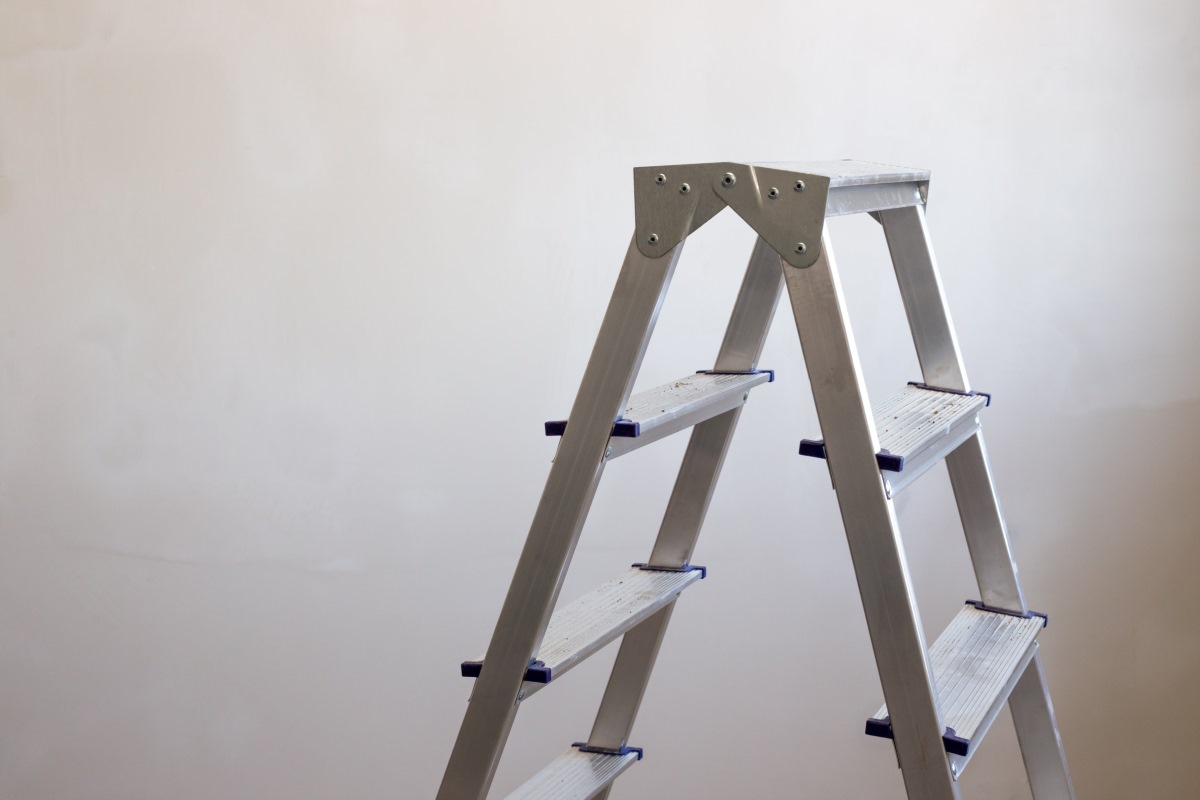
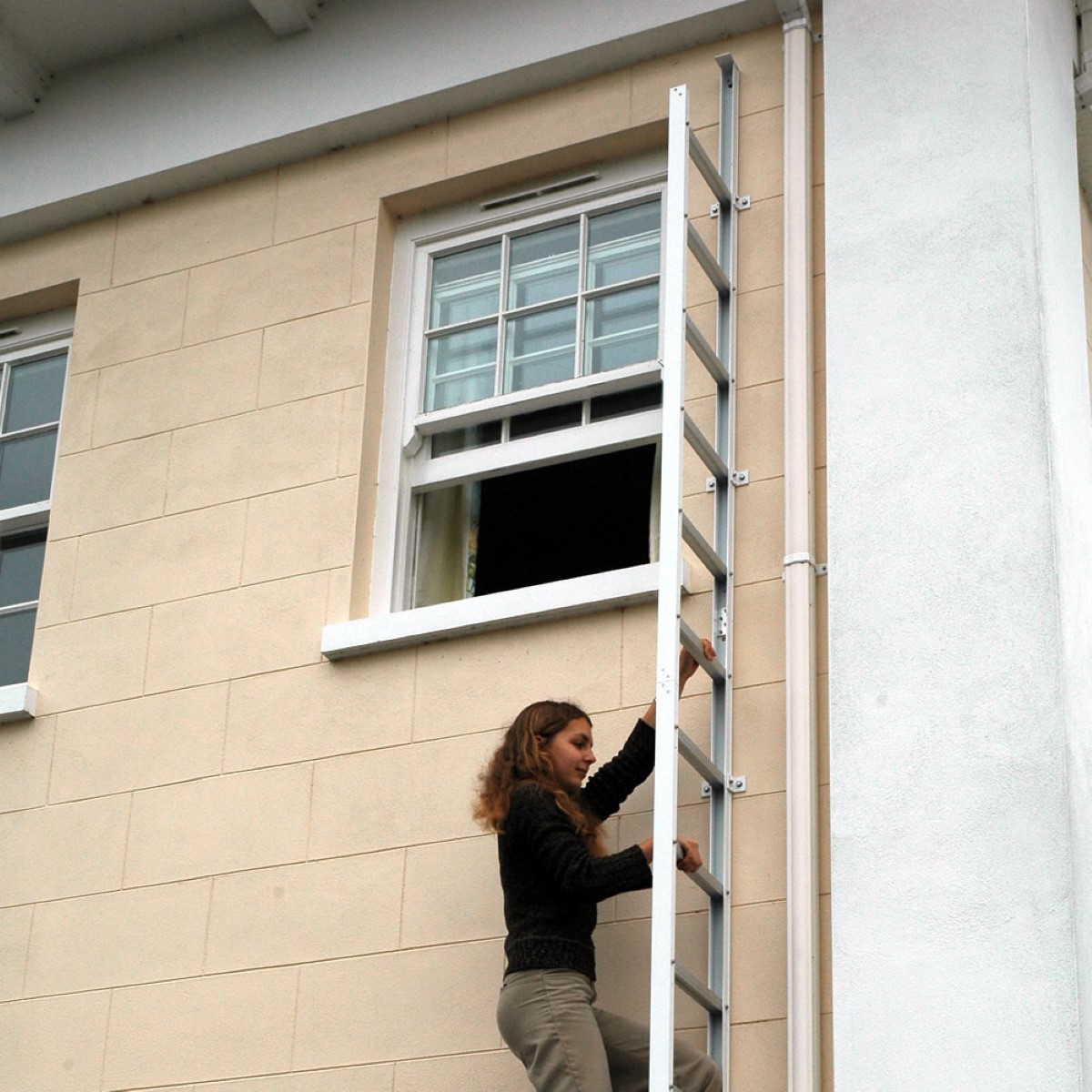
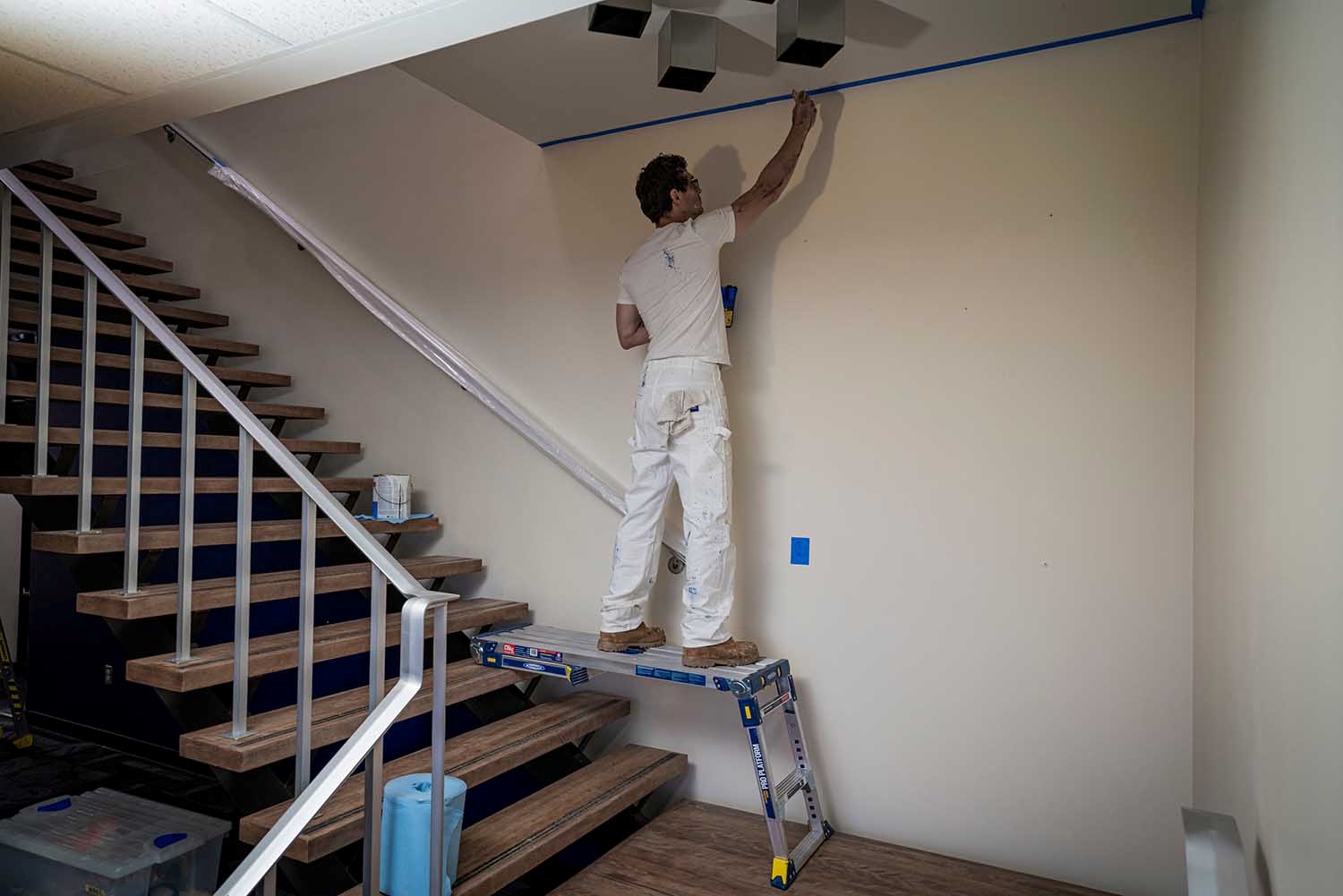

0 thoughts on “How To Use Ladder Stabilizer”